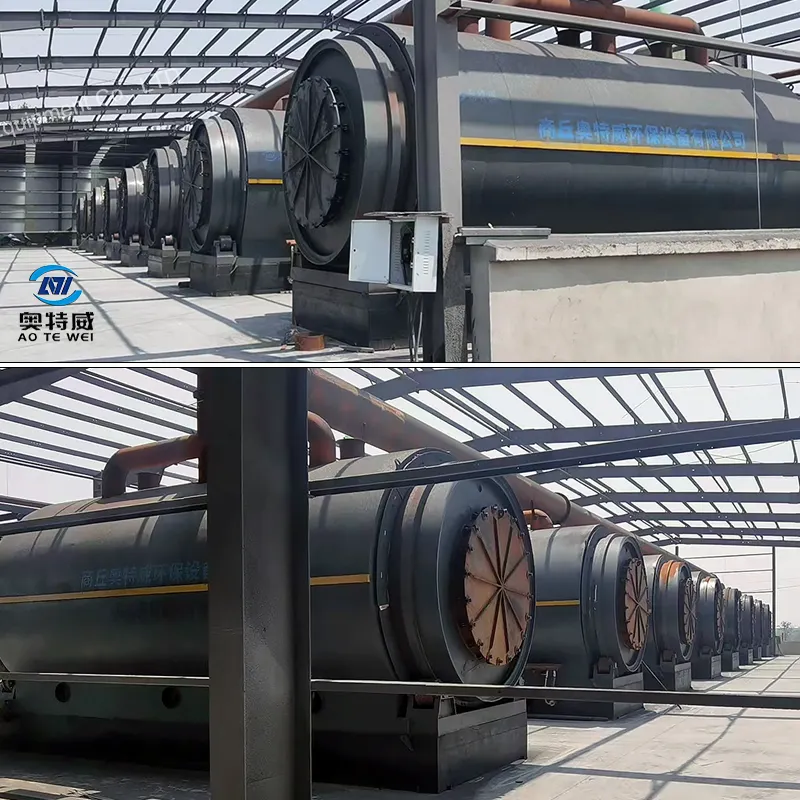The selection of continuous cracking equipment stands as a critical decision point for large-scale industrial plants. This sophisticated machinery forms the backbone of many processing operations, determining operational efficiency, output quality, and ultimately, the bottom line. Modern facilities require robust systems that can maintain consistent performance while handling substantial throughput volumes. This comprehensive guide will explore the vital factors in selecting the right continuous cracking equipment for your large-scale plant operations.
When evaluating continuous cracking equipment, processing capacity serves as the primary consideration. The equipment must align with your plant's production targets while maintaining optimal efficiency. Modern systems typically offer throughput ranges from 50 to 500 tons per hour, depending on the model and configuration. It's essential to factor in not just current production needs but also projected growth to ensure the selected equipment remains viable for the long term.
Beyond raw throughput numbers, consider the equipment's ability to handle peak loads and maintain consistent performance during extended operation periods. The best continuous cracking equipment includes advanced load management systems and automated adjustments to optimize processing efficiency across varying conditions.
Energy consumption represents a significant operational cost in large-scale plants. Advanced continuous cracking equipment incorporates energy-saving features such as regenerative systems and smart power management. Look for units that offer high energy efficiency ratings and include detailed power consumption data per ton of processed material.
Modern equipment should feature variable speed drives and intelligent control systems that automatically adjust power usage based on load requirements. This optimization can result in energy savings of up to 30% compared to older or less sophisticated systems.
The versatility of continuous cracking equipment in handling different feed materials is crucial for plant flexibility. High-quality systems should process various material types while maintaining consistent output quality. Consider equipment with adjustable parameters for different feed characteristics, including moisture content, hardness, and particle size distribution.
Advanced continuous cracking equipment often features pre-screening systems and automatic feed rate controls to optimize processing efficiency. These systems can detect and adjust to variations in feed material properties, ensuring stable operation and consistent product quality.
Output consistency is paramount in large-scale operations. Modern continuous cracking equipment should incorporate real-time monitoring systems and automated quality control features. Look for equipment with integrated sampling systems and adjustable product size controls to maintain precise specifications.
The best systems include multiple classification stages and advanced separation technology to ensure product uniformity. Consider equipment with automated product recycling capabilities for materials that don't meet specifications, maximizing efficiency and reducing waste.

The durability of wear components significantly impacts maintenance schedules and operational costs. Premium continuous cracking equipment utilizes advanced materials and innovative designs to extend component life. Look for systems with easily replaceable wear parts and modular construction to minimize maintenance downtime.
Consider equipment that features hardened steel or ceramic components in high-wear areas. The best systems include wear monitoring sensors and predictive maintenance capabilities to optimize component replacement scheduling.
Easy access to maintenance points reduces downtime and simplifies regular service procedures. Quality continuous cracking equipment should feature strategic access panels and quick-release mechanisms for routine maintenance tasks. Look for designs that allow major components to be serviced or replaced without complete system disassembly.
Advanced systems often include remote monitoring capabilities and diagnostic tools that help maintenance teams identify potential issues before they cause breakdowns. This predictive approach can significantly reduce unplanned downtime and maintenance costs.
Modern continuous cracking equipment should feature intuitive control interfaces that provide comprehensive system monitoring and adjustment capabilities. Look for equipment with clear visual displays, logical control layouts, and integrated safety monitoring systems. The interface should offer both automated and manual control options to suit different operating conditions.
Advanced systems often include remote access capabilities, allowing operators to monitor and adjust equipment parameters from central control rooms or mobile devices. This flexibility enhances operational efficiency and reduces response times to process variations.
The ability to collect and analyze operational data is crucial for optimizing plant performance. Quality continuous cracking equipment should include comprehensive data logging and analysis tools. Look for systems that can track key performance indicators and generate detailed reports for process optimization.
Modern equipment often features cloud connectivity and integration capabilities with plant-wide management systems. This connectivity enables real-time performance monitoring and facilitates data-driven decision-making for process improvements.
The primary factors affecting equipment capacity include feed material characteristics, motor power, chamber design, and operating parameters such as speed and feed rate. Environmental conditions and maintenance status also play significant roles in actual throughput capacity.
Energy efficiency can be optimized through proper equipment sizing, regular maintenance, use of variable speed drives, and implementation of advanced control systems. Proper feed material preparation and maintaining optimal operating parameters also contribute to energy efficiency.
Key maintenance considerations include regular inspection of wear components, lubrication system maintenance, alignment checks, and monitoring of operating parameters. Implementing a preventive maintenance schedule and keeping detailed maintenance records are essential for optimal equipment performance.
 Hot News
Hot News2024-09-25
2024-09-18
2024-09-12
2024-09-05
2024-08-30
2024-08-23

Copyright © 2025 by Shangqiu AOTEWEI environmental protection equipment Co.,LTD Privacy policy